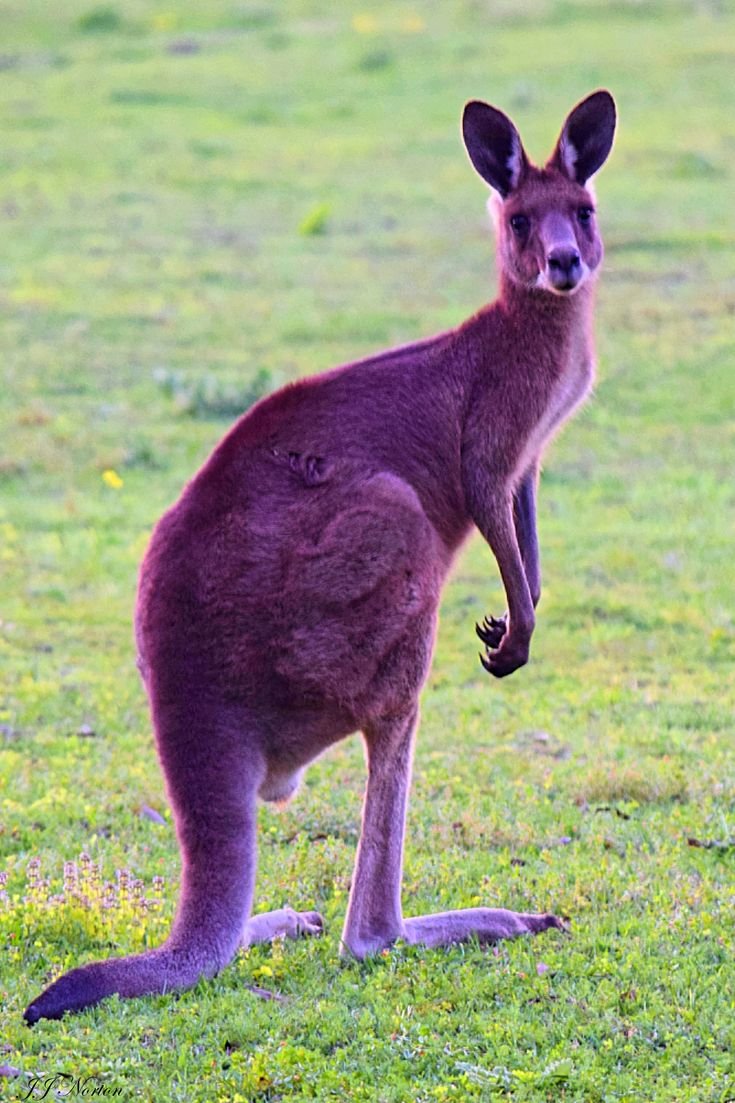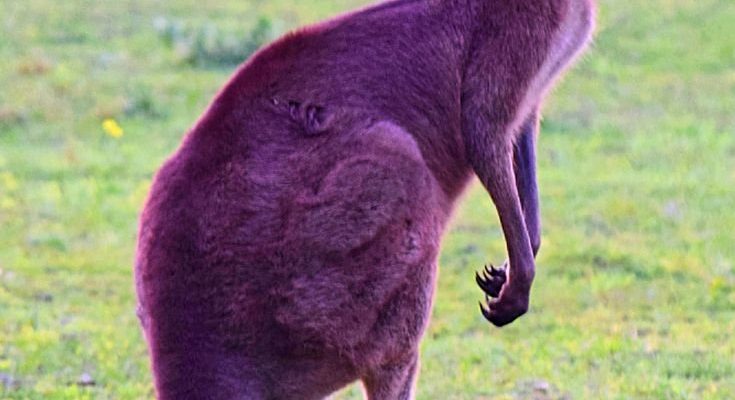
Imagine sitting across the table from a curious friend, discussing how animals think. You might say, “It’s fascinating how kangaroos can recognize each other’s faces and even learn from their experiences, just like a dog!” Today, we’re diving into what makes the Eastern Grey Kangaroo so special in terms of intelligence and behavior, exploring everything from their problem-solving skills to their social dynamics.
Understanding Eastern Grey Kangaroo Intelligence
The first step in unraveling the mystery of how smart the Eastern Grey Kangaroo is to understand what we mean by intelligence. Generally, intelligence in animals can be defined as their ability to learn, adapt, and solve problems. With kangaroos, their intelligence may not be measured with tests like we use for humans, but we can observe their behaviors and understand their cognitive abilities through various activities and habits.
Eastern Grey Kangaroos are known for their adaptability. They thrive in different environments, from urban areas to dense forests. This ability to adjust gives them an edge—it shows they can learn and modify their behavior based on their surroundings. For instance, they’ve been observed adjusting their foraging strategies according to the time of day and the availability of food. Now that’s a clever move!
Problem-Solving Abilities
When you think about animal intelligence, problem-solving often comes to mind. For the Eastern Grey Kangaroo, problem-solving doesn’t necessarily mean doing math homework but rather figuring out how to access food or navigate their habitat.
These kangaroos have been observed using trial and error to find food. For example, if a certain area is cleared of grass or leaves, they will remember this and move on to greener pastures. Interestingly, some studies suggest that they can even recall locations of food sources that they might have encountered days or weeks earlier. This memory for food locations is a key survival strategy in the wild, showcasing their ability to think ahead.
Additionally, kangaroos have shown social learning, which is when one animal learns from the behavior of others. If a kangaroo sees another successfully getting into a difficult spot for food, it will often try to mimic that behavior. This kind of learning boosts their survival skills and highlights their cognitive flexibility.
Social Behavior and Communication
Kangaroos are social creatures, often found in groups known as mobs. Their social dynamics can offer insights into their intelligence, as they rely on communication and cooperation to thrive. You might be wondering, what does that look like? Well, kangaroos communicate through a mix of vocalizations, body language, and even facial expressions.
For example, you might hear a soft grunt when they’re content or a loud cough-like sound when they feel threatened. Their body language is equally telling; they often use posture and movement to convey their feelings or warn others of potential danger. This form of communication is essential for maintaining social order in their mobs.
Furthermore, the Eastern Grey Kangaroo exhibits behaviors that indicate bonding and cooperation. They often groom each other or engage in playful antics, which help reinforce relationships within the group. This behavior reflects an understanding of social structures and the need for connectivity, which are important facets of intelligence.
Learning Through Experience
Like humans, Eastern Grey Kangaroos learn from their experiences. They can adapt their behavior based on past encounters, which is a significant indicator of intelligence. For instance, if a kangaroo encounters a predator, it learns to be cautious in that area in the future, changing its patterns of movement and feeding.
Moreover, researchers have noted that young kangaroos, or joeys, learn vital survival skills by observing their mothers. They watch how she feeds, interacts with other kangaroos, and stays alert for danger. This *observational learning* helps ensure the next generation is equipped to handle the challenges of their environment.
Environmental Adaptations
The Eastern Grey Kangaroo’s intelligence extends to how they interact with their environment. They demonstrate remarkable adaptability when it comes to finding food and shelter, showcasing their resourcefulness. They can thrive in diverse habitats, from open grasslands to bushy areas, all while adjusting their behaviors to suit their surroundings.
For instance, during droughts or food shortages, these kangaroos can modify their foraging habits. They might travel longer distances or change their diet to include less favorable options. This flexibility is crucial for survival and demonstrates their ability to process information and act accordingly.
Facing Human Influence
As human populations expand, Eastern Grey Kangaroos increasingly find themselves in urban areas. The way they adapt to these environments further highlights their intelligence. They learn to navigate roads, use human-made structures for shelter, and even become accustomed to human activity.
Many people have witnessed kangaroos foraging near parks or golf courses, showing their ability to explore new opportunities. In some cases, they seem surprisingly unafraid of humans, likely due to a learned understanding that we don’t pose a threat in certain contexts. This kind of behavioral adaptation illustrates their cognitive skills in a rapidly changing world.
The Emotional Lives of Kangaroos
Did you know that research suggests kangaroos might experience emotions too? Just like pets can show joy, fear, or anxiety, kangaroos exhibit behaviors that suggest emotional experiences. For example, mothers can often be seen fiercely protective of their joeys, displaying signs of stress or fear when they sense danger.
Furthermore, bonding between members of a mob can indicate a form of social emotion. When one kangaroo is injured or distressed, others in the group may stay close, offering support. While we can’t say for certain what they’re feeling, these behaviors suggest that kangaroos have complex social lives and emotional depth.
Understanding how smart the Eastern Grey Kangaroo is involves looking at their problem-solving skills, social behaviors, adaptability, and emotional lives. These creatures may not solve puzzles like a dog, but their intelligence is evident in the way they interact with each other and their environment. As we continue to learn more about these fascinating animals, it becomes clear that they’re not just bouncing through life—they’re thinking, adapting, and feeling along the way.
So, next time you see a kangaroo, take a moment to appreciate the intelligence behind those big, curious eyes. After all, there’s so much more to them than meets the eye.

